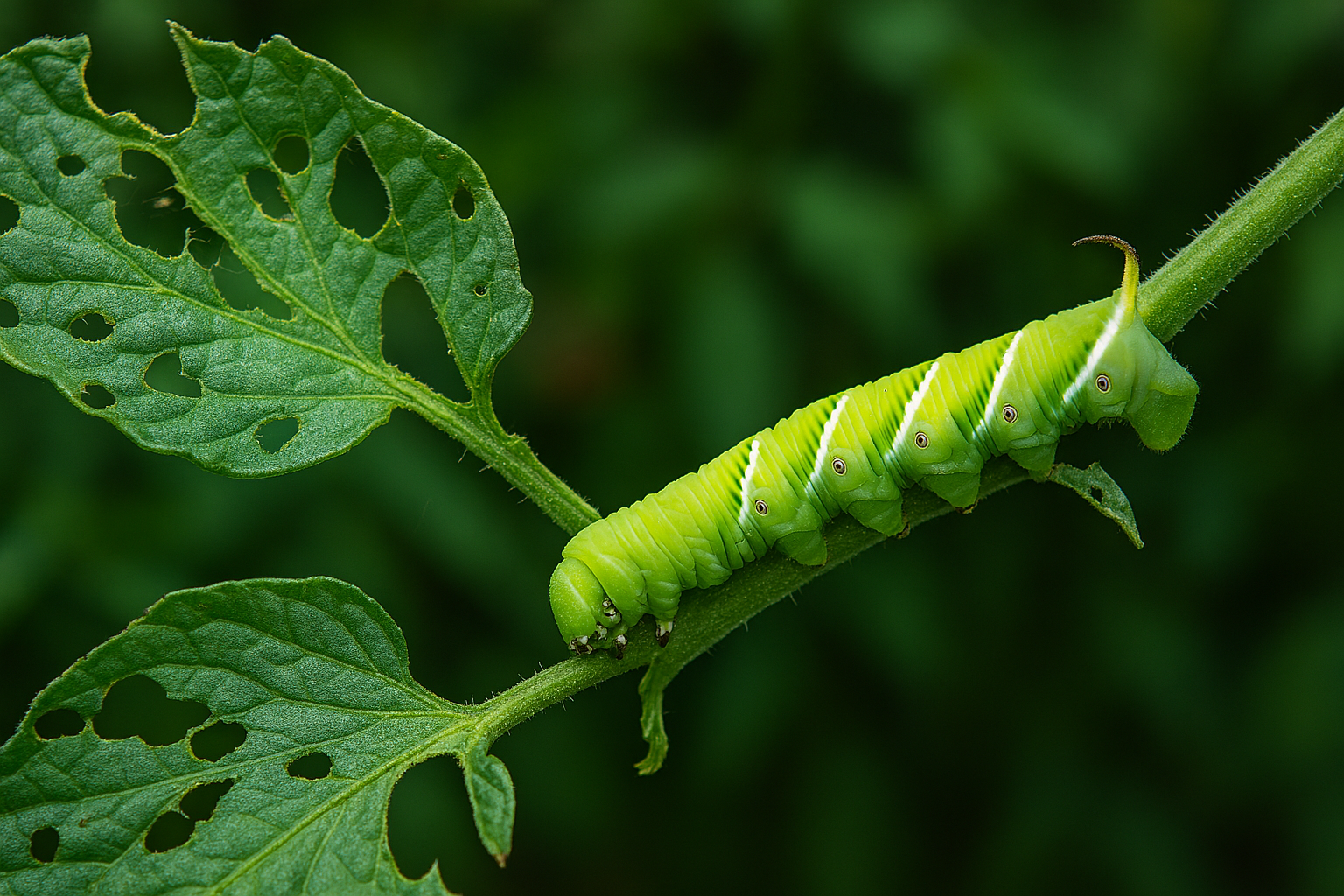If you’ve ever grown tomatoes, you know the struggle is real—just when those vines are bursting with green promise, something sneaky moves in to chew, suck, or bore its way through your crop. The good news? With the right mix of prevention, observation, and eco-friendly remedies, you can keep your tomato plants strong and pest-free without reaching for harsh chemicals.
Common Tomato Plant Pests (and How to Spot Them)
1. Tomato Hornworms
These large green caterpillars can strip a plant of leaves almost overnight. Look for chewed foliage, droppings, and the culprits themselves—sometimes camouflaged against the stems.
Control Tip: Handpick hornworms in the early morning or evening and relocate them (chickens love them!). For persistent infestations, try Bacillus thuringiensis (Bt), an organic caterpillar control.
2. Aphids
Tiny green, black, or white insects cluster on new growth, sucking sap and weakening plants. They also leave behind sticky honeydew that can lead to sooty mold.
Control Tip: Blast them off with a hose or introduce natural predators like ladybugs. Neem oil is another effective organic spray.
3. Whiteflies
These little winged pests hide on the underside of leaves. Disturb a plant, and you’ll see them scatter like confetti.
Control Tip: Yellow sticky traps can reduce populations. In severe cases, insecticidal soap works well without harming your tomatoes.
4. Cutworms
Seedlings mysteriously cut down at the base? That’s cutworm work. They feed at night and hide in soil during the day.
Control Tip: Place cardboard collars around seedlings to protect stems, and keep garden beds weed-free.
5. Spider Mites
These nearly invisible pests create fine webs and cause stippled, yellowing leaves.
Control Tip: Spray plants with water regularly to keep mites at bay—they thrive in dry conditions. Neem oil or insecticidal soap can also help.
Natural & Preventive Pest Control
- Crop Rotation: Avoid planting tomatoes in the same spot every year to reduce soil-borne pest buildup.
- Companion Planting: Basil, marigolds, and nasturtiums can deter pests while boosting pollination.
- Healthy Soil: Strong plants resist pests better—feed your soil with compost and mulch.
- Regular Inspections: Check leaves (top and underside) every few days. Catching pests early is half the battle.
Recommended Tools & Products
- Organic Neem Oil Spray – A safe, effective option for aphids, whiteflies, and spider mites.
- Yellow Sticky Traps – Great for monitoring and controlling whitefly populations.
- Floating Row Covers – Protect seedlings from cutworms and other early-season pests.
- Handheld Garden Sprayer – Makes applying organic pest controls quick and efficient.
We earn a commission if you make a purchase at Amazon, at no additional cost to you.
Final Thoughts
Tomato pests may be determined, but so are you. With a watchful eye and some eco-friendly strategies, you can keep your tomato plants thriving and enjoy a healthy, homegrown harvest. Remember—prevention and consistency are the real secret weapons in organic pest control.
Also check out my Home-Grown Tomatoes page






Leave a Reply